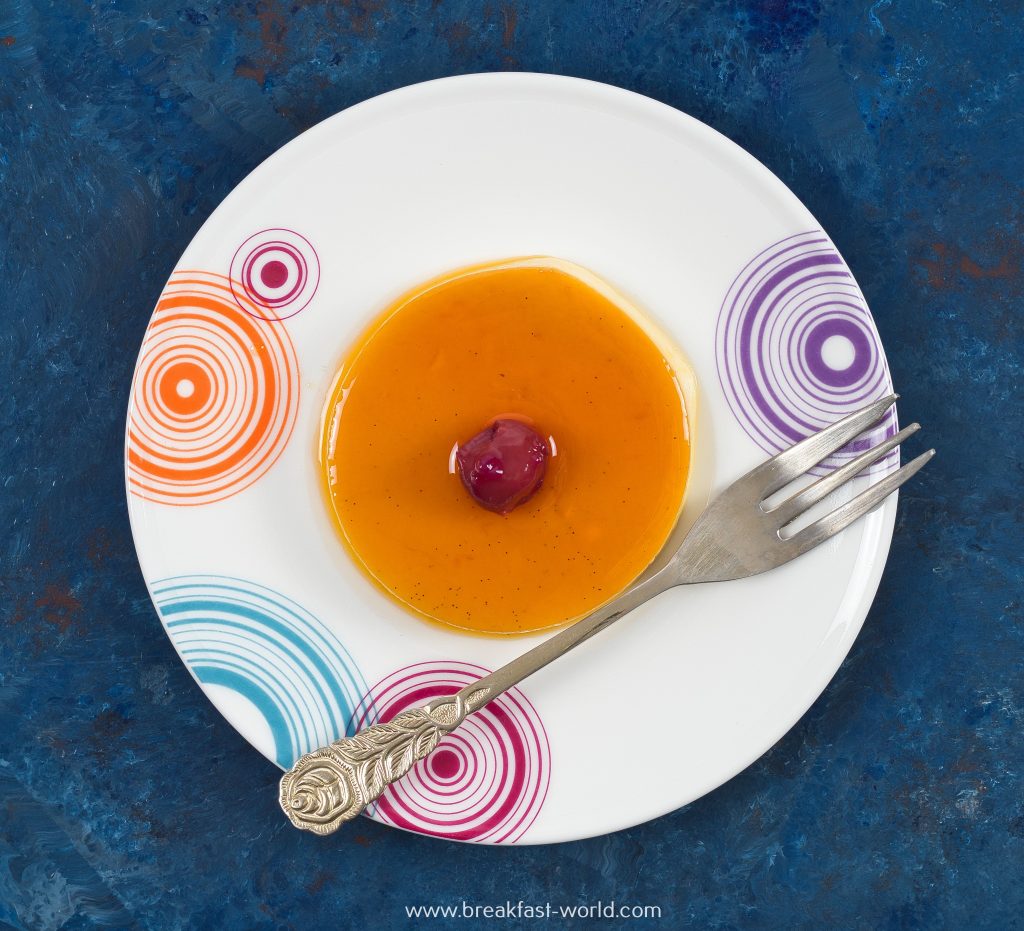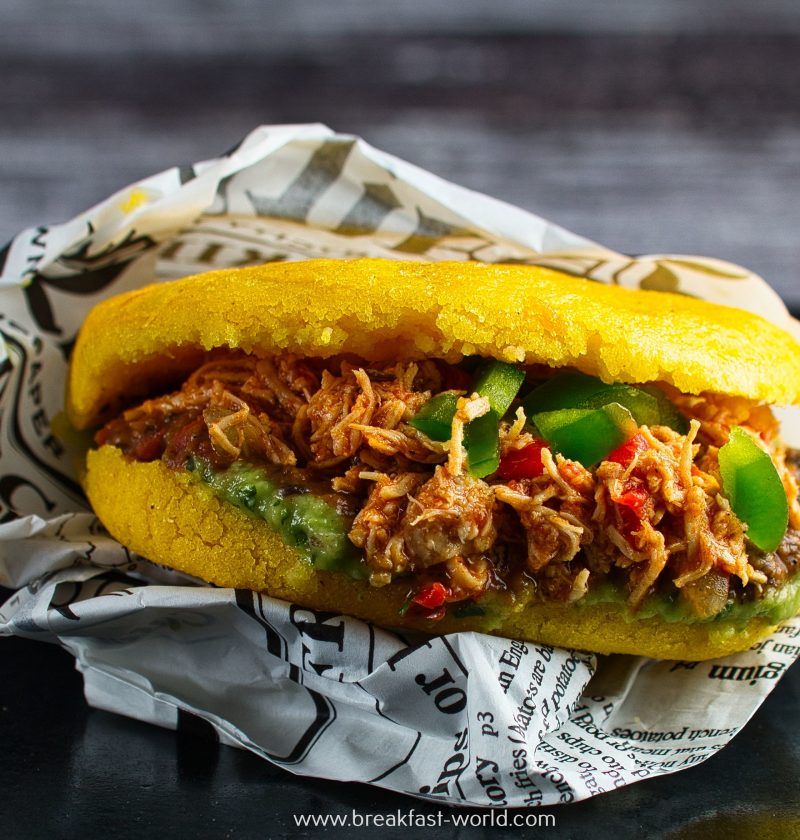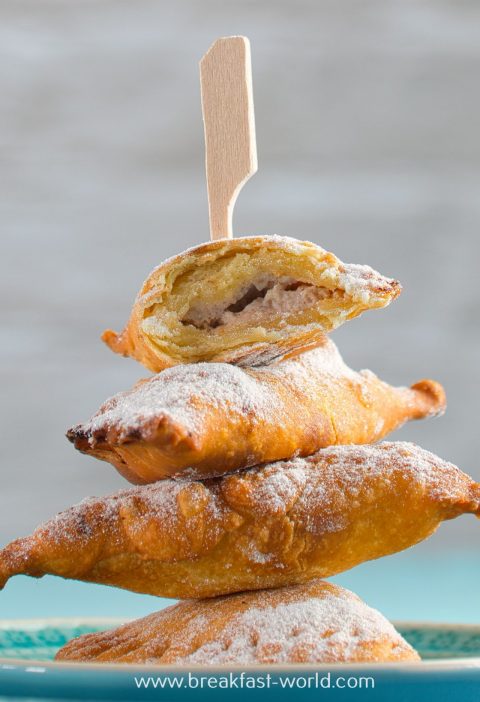Arepa are small round flatbreads made from corn flour. They are very popular for breakfast in Venezuela. However, Venezuelan cuisine has much more to offer than Arepa . Before you learn the recipe for Arepa a few interesting information about cuisine and breakfast in Venezuela.
Jump to RecipeVenezuelan cuisine
Venezuelan cuisine is based - similar to mexican - on corn and beans, which the Indians used as staple food centuries ago. The Spaniards and other Europeans introduced rice and wheat flour. Often on the menu are plantains, yams, potatoes, tomatoes, onions, eggplant, pumpkin and zucchini. Due to the tropical climate, pineapples, melons, papayas, bananas, oranges and passion fruits thrive in abundance.
In general, Venezuelan cuisine is very rich and therefore nothing for the calorie-conscious. However, it is quite tasty! This is especially true for dishes with meat (pork, goat and poultry). On the coast there is a wide variety of delicious fish and seafood dishes.
Typical side dishes are rice, Tostones (deep-fried green plantains) and yuca frita (deep-fried cassava root).
The national dish is called: Pabellón Criollo. This is a plate with black beans, rice, pulled meat (Carne Mechada), fried plantain slices and guasacaca (the Venezuelan version of guacamole):

Soups and stews are very popular. The best known are Sancocho, which consists of meat, fish and tuber vegetables, and Mondongo, a spicy stew with offal.
The traditional Christmas dinner is called: Hallacas. Similar to Tamales banana leaves are filled with a mixture of pork / beef, chicken, green pepper, onions, garlic, tomatoes, raisins, olives, herbs and spices and cornmeal dough. The stuffed banana leaves are steamed over hot water.
The most popular Venezuelan sweets are cooked jams and fruit jellies. Panela (a type of dried syrup made from cane sugar) is often used for desserts and sweets.
My favorite dessert is Quesillo. This is a kind of flan made from sweetened condensed milk, eggs and caramel, which is cooked in the oven for over an hour in a hot baine-marie:

Breakfast in Venezuela
Venezuelans tend to have a quick breakfast in the morning. People like to meet for breakfast in a bakery selling delicious cakes and pastries.
Very popular are e.g. Cachitos: ham croissants made from a slightly sweet yeast dough with a hearty ham filling.
Cachapa is a type of pancake made from fresh corn kernels, corn flour, milk, eggs and sugar. It is filled with a piece of cheese and folded up before eating:

Casabe is a thin, flat flatbread made from cassava. Tequeños are fried cheese sticks wrapped in batter. Empanadas (filled and fried dumplings made from wheat flour) are also typical breakfast dishes.
The breakfast classic is Arepa (flatbread made from corn flour). In Venezuela it is said to someone who is very famous: You are more famous than the Arepa.
Arepa
As already mentioned, Arepa are flatbreads made from corn flour. They are about 2 cm thick and about 10 cm in diameter.
Arepa are usually sold directly on the main roads with a lot of traffic by so-called Areperas. Areperas do not have a brick facade, but a rolling metal grille. A fan provides fresh air. Some areperas are open around the clock.
You can bake Arepa in the oven or on the grill, fried in a pan or deep-fried in hot oil. In Venezuela, they are served as a side dish - such as bread - with almost all meals. Fresh Arepa with butter, cheese and a little salt are a real enjoyment!

Venezuelans also like to eat their Arepa filled. To do this, they are half cut and e.g. filled with cheese, meat, sausage, fish, beans, eggs, bacon or vegetables.

Sweet Arepa-Fillings are uncommon in Venezuela. However, I also like to spread Arepa with cream cheese and jam.
Arepa must be eaten fresh. If they stand for a while, they dry out quickly.
Since they are very filling, one reckons per person with 2 - 3 Arepa.
There is no exact recipe for Arepa. The basic ingredients are corn flour, water and salt.
Tips for the preparation of arepa:
- Make sure that you take Masa Harina for the dough. Masa Harina is a specially pretreated (pre-cooked, nixtamalized) corn flour. It is used across Latin America for tortilla, tamales, arepa, etc. Normal corn flour such as we use for our polenta is not suitable for the preparation of Arepa. Masa Harina can be bought in stores that specialize in food for Latin American foods.
- You can also add a pinch of sugar, a dash of milk, butter lakes, dried herbs or finely chopped chilli to spice it up.
- It is important that the dough is nice and moist. If the dough ball rips at the side edges when you flatten it, you have to add a little more water.
- If you bake your Arepa - like me - in the pan, you should first let the pan get very hot and then reduce the temperature a little before baking. The baking process takes about 5 - 10 minutes per side. Turn the Arepa several times during baking until they are golden-brown and then serve immediately.
Well, now you are well informed about Arepa and nothing can go wrong with baking!
Have fun baking and enjoy eating!

Arepa
Zutaten
- 300 g Corn flour (Masa Harina)
- 400 ml water (possibly a little more)
- 1 tsp. salt
- some oil for frying
- Filling as desired, e.g. grated cheese, egg, sausage, pulled beef, avocado, lettuce, tomato, etc.
Anleitungen
- Put the corn flour in a bowl with salt.
- Gradually add water and mix with the flour.
- In a bowl, knead the dough with your hands until smooth.
- The dough should be moist, but not completely stick to your hands. When you shape a ball and flatten it, it shouldn't have any rips at the edge. Otherwise add a little more water.
- Cover the dough with a wet cloth and let it rest for about 5 minutes (not too long, otherwise the dough will dry out).
- Shape the dough into 7 equal sized balls, then press each ball with your hand into a flat cake.
- Heat some oil in a pan and bake the arepa on medium heat until golden brown on both sides (this takes about 5 - 10 minutes on each side).
- Alternatively, Arepa can also be fried golden brown in hot oil (180 degrees, approx. 7 minutes) or baked in the oven (230 degrees approx. 10 minutes plus approx. 3 minutes grill function).
- Keep the arepa warm in the oven and serve as soon as possible.
- For serving cut the arepa open and fill them as desired.
If you like this post, I look forward to a rating (star bar) or a nice comment!
Thanks a lot!
Perhaps you would also like to subscribe to my page. If so you will be regularly informed about new posts.









Hi, thanks for spreading a bit of my culture!
I did find a few things that were uncommon to me as a venezuelan. However, Venezuela is not a small country so it might be due to the region I am from (Cabimas, Zulia) that I find these things not so common.
Now, a couole of things I’d like to point out just to collaborate to this post:
1. masa harina: I have no idea what that is. most venezuelans prefer (and are somewhat devoted to using) a corn flour called PAN (yes, as in bread but it is not for bread). It is precooked corn flour, but what is stated in the post is true: it is not the one used for Polenta.
2. Now, this is a strong debate even among venezuelans, but in the recipe, water should go before the flour, i.e., add flour to water and not „add water onto flour“. While you can actually get a very similar result, the method I mention gives more control over the texture of the resulting dough, not to mention it is the instruction in the package of Harina PAN.
I hope this results informative to others and, once again, thanks for sharing a bit of my culture
Hi José, thanks for your interesting and helpful comment!!! I am very happy that I could share a bit of your culture!! Best regards Christina
Danke für die gute Zusammenfassung der traditionell venezolanischen Küche und beste Grüße von der Isla de Margarita >> t.me/Venezuela_Info_Channel